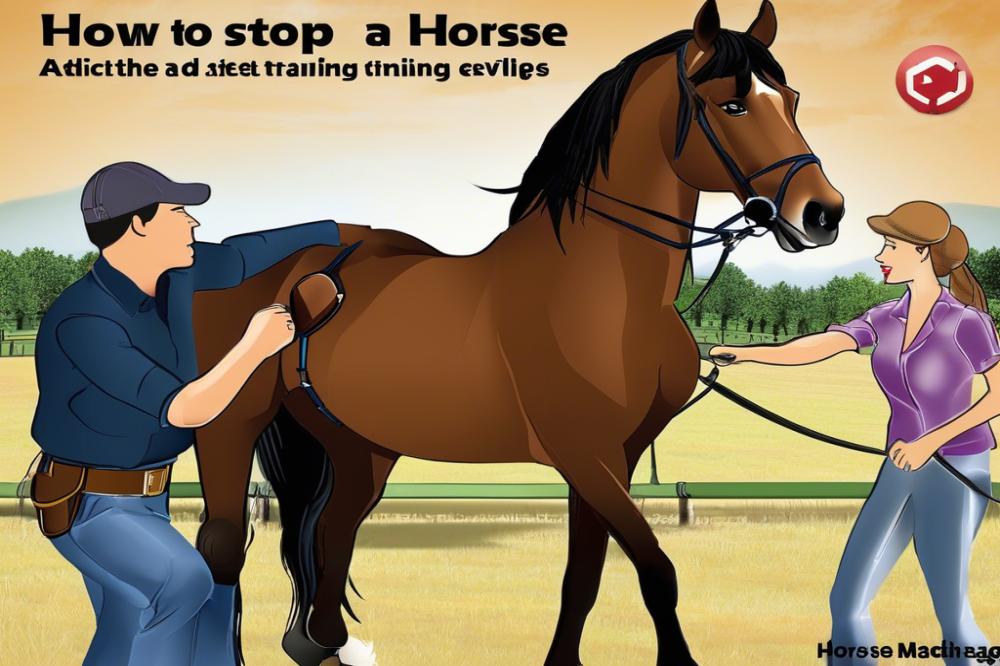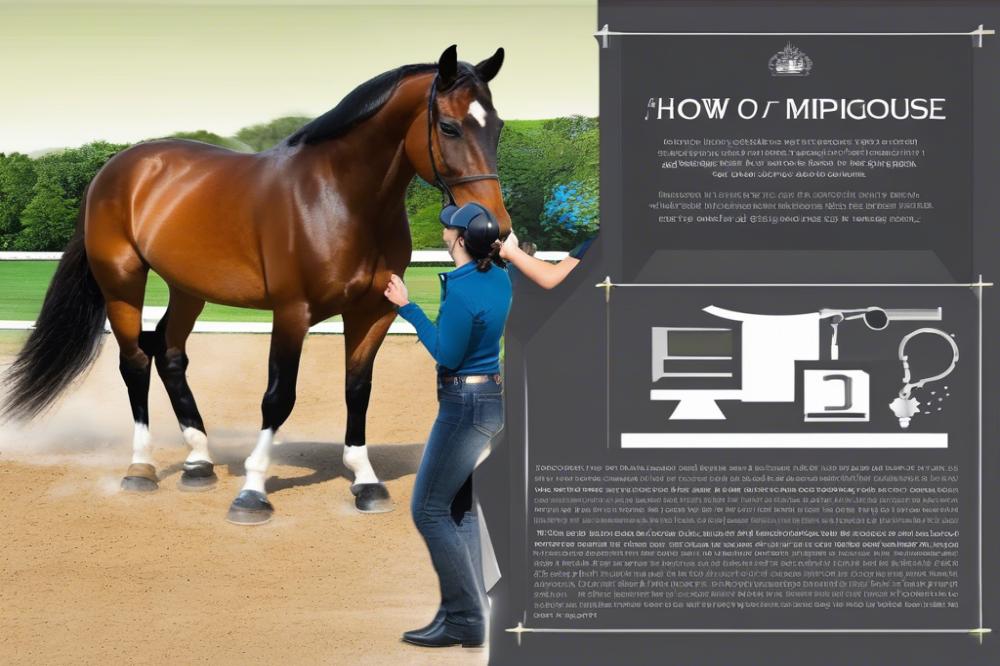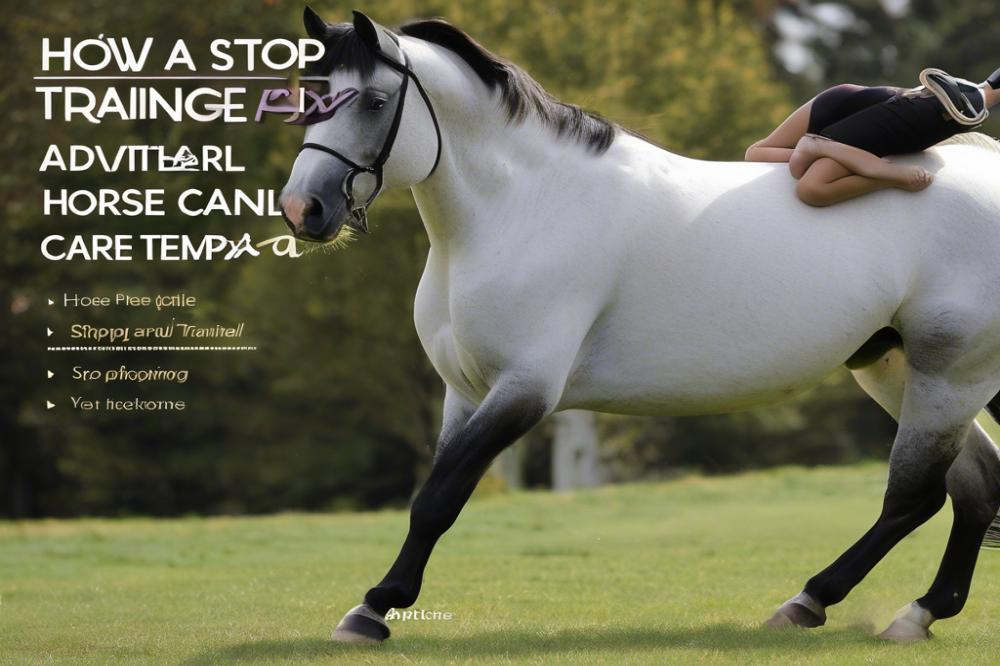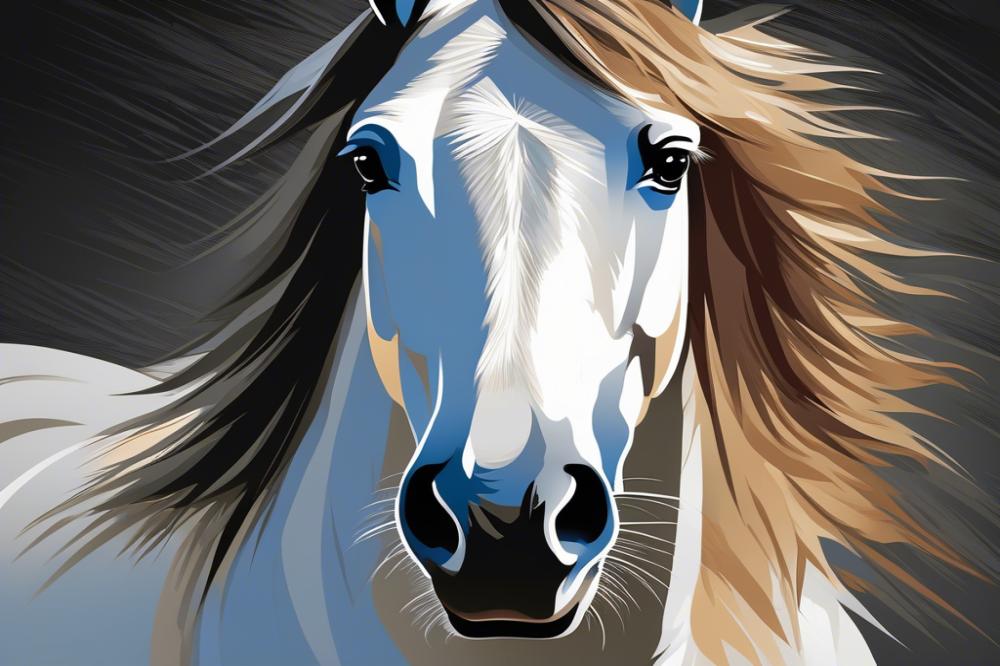Understanding the Art of Stopping a Horse
When it comes to horse riding, there’s a saying: “It’s not how fast you go, but how well you can stop.” Learning how to stop a horse is a crucial skill that every rider should master, whether you’re trotting around a calm arena or galloping through a beautiful countryside. Being able to halt your trusty steed with confidence not only showcases your mastery of equestrian techniques but also speaks volumes about your knowledge in horse training and horse care.
Certain situations will call for a good, solid stop. Imagine you’re out on a trail ride, taking in the sights and sounds of nature. Suddenly, a deer bolts across the path or a dog runs after you. In moments like these, knowing how to execute effective stopping commands can make all the difference. Your safety, as well as your horse’s, hinges on this skill, especially in unexpected circumstances that can make your pulse race faster than a camel vs horse race.
Safety is paramount in the world of horse riding. It’s not just about keeping yourself safe; it’s also about ensuring your horse remains calm and collected. A horse that is pulled up suddenly can become startled, and we wouldn’t want our beloved companions to feel anxious or uncomfortable. So, understanding the nuances of stopping techniques creates a bond based on trust. Think of it like a dance; you want to move together gracefully, without stepping on each other’s toes.
Let’s be real—a good stop is like finding dessert after a long day; it just makes everything better! Learning how to properly halt your horse brings peace of mind, not only for you but for your four-legged friend as well. So saddle up, and let’s dive into the essential skills needed to bring your horse to a gentle stop, ensuring that both you and your horse remain part of the joyous adventure of riding.
Understanding Horse Behavior

Horses are fascinating creatures. Their natural instincts drive them to respond in certain ways. For example, they are prey animals. This instinct means they are always on high alert. A sudden noise can make them jump. This can be a challenge when trying to teach them to stop.
When you ride, your actions communicate a lot. Horses pick up cues from their riders well. They can sense your body movements, the way you hold the reins, and how you shift your weight. It’s important to be aware of this. If you want your horse to stop, how you act matters. A confused rider means a confused horse!
Speed plays a role, too. When a horse is moving quickly, stopping becomes harder. Think about it like a car. The faster it goes, the longer it takes to stop. When you’re on a horse, this is true as well. Therefore, learning proper equestrian skills is crucial. It enhances both horse riding and horse training when practiced properly.
Stopping commands can be tricky, especially at higher speeds. Good communication is key. A simple tug on the reins paired with a gentle voice command works wonders. Using consistent signals helps your horse understand exactly what you want. Imagine telling a friend to stop running while you’re both playing tag. If you don’t shout or wave your arms, they keep going!
Observing your horse’s movements helps too. Watch how they react when you pull back on the reins. If they slow down, you’re on the right track. If they continue at the same speed, you might need to adjust a bit. Training is a process, not a race.
Don’t forget about the horse’s personality! Each horse has its own style. Some are more eager to stop than others. This can depend on their past horse care or training experiences. Patience is your best friend. Just like you wouldn’t rush a friend who’s learning to ride a bike, give your horse the time it needs.
In the end, understanding your horse is paramount. Each animal is as unique as the rider on its back. Putting all these elements together makes for a safer ride. It’s like putting together a puzzle; each piece helps you figure it out. So take the time to learn about their instincts. It pays off in spades!
Basic Stopping Techniques

Stopping a horse is crucial in developing strong equestrian skills. Several methods can help achieve this. Initially, riders learn to use the reins effectively. A gentle pull back sends stopping signals to the horse. Pull too hard, though, and it can cause confusion or even frustration. It’s all about finding that balance.
Using your body can be just as important, if not more. Leaning slightly back helps communicate your intention to stop. Don’t underestimate the power of your seat in horse riding. When you sit deeper in the saddle, it tells the horse to slow down. Every little shift in your position can help reinforce stopping commands.
Some riders swear by vocal cues. Saying “whoa” in a calming voice often works wonders. The tone matters, too—friendly but firm. This consistency helps your horse associate the word with the action of stopping, much like teaching a dog to sit.
Combining these techniques can create a harmonious stopping procedure. Think of it as a dance between horse and rider. You lead with your body while the reins guide the way. With practice, horse training evolves into a beautiful art.
Body language plays an essential role as well. If you’re anxious, your horse may become restless. Stay calm and relaxed to promote a sense of peace. A relaxed rider usually results in a relaxed horse. It’s like they can sense your emotions, almost like a sixth sense!
Incorporating all these elements may take time. Practice makes perfect is definitely true here. Start in a safe area, where distractions are minimal. Gradually increase the complexity by introducing different environments. With patience and persistence, equestrian techniques will become second nature.
Advanced Stopping Methods

When it comes to stopping a horse, experienced riders have a few tricks up their sleeves. Not all stopping techniques are created equal. With practice, some methods can be quite effective in more advanced riding situations.
The One-Rein Stop
Have you heard of the one-rein stop? This technique is a handy tool in an experienced rider’s toolkit. It allows you to slow down and regain control quickly, especially in unexpected situations. Picture this: you’re on a spirited mount who’s decided that heading toward the nearest patch of grass is a good idea. Pulling on one rein gently directs the horse’s nose toward your knee. It’s a simple move, but it effectively limits forward motion. You’re using your weight and balance to help, too. It’s not just about the reins; it’s about how you position your body.
Training your horse to respond to this technique can be a game changer. Practicing allows your horse to understand what you want. Every time you use it in a controlled environment, you build that connection. The next time it matters, you and your horse will be ready. Remember, this technique isn’t just about stopping—it’s about communicating clearly.
Direct and Indirect Rein Pressure
Now let’s dive into rein pressure. It can be direct or indirect, and both methods have their place in proper equestrian skills. Direct pressure comes when you pull back on the reins to slow or stop the horse. It’s straightforward and often effective. Indirect pressure, on the other hand, involves using one rein to guide the horse’s head slightly to one side while also pulling back on the reins. Think of it as coaxing your horse into a little dance. A good dancer knows how to lead without forcing their partner, right?
Using the indirect method opens up a world of communication between you and your horse. It can be particularly beneficial when riding in open or unfamiliar environments. In those moments, horses can be a little skittish. With practice, this subtle cue gives them a sense of security. They’re more likely to listen and respond. Combining both direct and indirect pressures can yield excellent results when stopping commands are needed. Just play around with them on a quiet trail ride before you need to use them in a pinch.
As with any skill in horse training and care, practice makes perfect. Regularly using these techniques helps reinforce what you’ve taught your horse. Don’t be surprised if it takes time. Horses, like people, learn at their own pace. So, keep your sense of humor and stay patient. The journey can be just as rewarding as the destination!
Situational Stopping Strategies
Stopping a horse can change dramatically based on the situation. Whether you’re riding, training, or faced with an emergency, your approach needs to adapt. For riding, calmness and clear signals are vital. Use your body language effectively. Squeeze the reins gently, but don’t confuse the horse.
Training moments offer a chance to reinforce stopping commands. In the arena, practice can make perfect. Start with simple cues and reward your horse when it obeys. Effective communication builds trust. Over time, your horse will respond faster to your signals. Patience is key here.
Emergency Measures
During emergencies, you might need to get creative. When a horse is spooked, loud noises can startle them further. Instead, try using your voice calmly. Saying “Whoa” firmly, but softly, can grab their attention. Using your weight by shifting back in the saddle can also help. This draws the horse’s focus away from whatever caused the scare.
Adjusting for Training Levels
Every horse has its own training level. Beginners may not respond well to subtle cues. Stronger signals may be necessary at first. As their equestrian skills grow, you can refine your technique. Advanced horses might require a light touch. Understanding your horse’s experiences is essential for effective stopping.
Handling Different Temperaments
Did you know that temperament affects how a horse reacts? Some horses are calm and easygoing. With them, stopping can feel effortless. Just a gentle pull on the reins can do wonders. Others may be more spirited or anxious. You might need to be firmer and more assertive in these cases. Remember, humor helps! Think of training as a dance. You have to lead, but don’t forget to enjoy the rhythm.
Keeping your focus on your horse’s needs helps a lot. Stay observant. Watch how your horse reacts in different situations. Those that fidget or back away may need more reassurance. A soothing voice and gentle touch can go a long way. Building a bond is part of horse care too!
Common Mistakes to Avoid
Common Errors Riders Make When Stopping a Horse
Trying to stop a horse incorrectly can lead to all sorts of headaches. Riders often yank on the reins too hard. It’s not about brute force; it’s about finesse. Many forget to use their legs properly. Using legs is crucial. Leaning back is another big mistake. That can make the horse think you want to go faster. Riders who don’t give a clear stopping command confuse their horse. Ambiguity can lead to chaos!
Consequences of Improper Stopping Techniques
When stopping techniques go wrong, the horse might bolt or ignore your cues. This could lead to a wild ride instead of a gentle stop. That’s not great for safety! If a horse learns to ignore your commands, it can create trust issues. Nobody wants to have a horse that doesn’t listen. Over time, these missteps can also lead to injuries, both for the rider and the horse. A confused horse is a dangerous horse.
How to Correct These Mistakes
First, focus on your posture. Sitting up straight helps communicate better. Next, practice your stopping commands. A clear voice really does make a difference! You can also work on using your legs more effectively. Make sure to squeeze gently for additional pressure. Be patient with your horse. Consistency is key in horse training. If the horse seems perplexed, try breaking down your cues. From time to time, practice stopping in a safe space. This builds confidence for both of you. Remember, even the best equestrian skills take time to master! Add a sprinkle of humor, and you’ll both enjoy the learning process.
Training for Better Stopping Response
Strategies for Training a Horse to Respond to Stop Cues
Training your horse to respond well to stopping commands is crucial. Start with consistent cues. You can use your voice, a specific rein pull, or even a gentle squeeze of your legs. Horses respond better to clear signals. When you practice, reward your horse immediately when they obey. This helps reinforce good behavior. Always keep training sessions short and fun. Remember, patience is your best friend. If your horse isn’t getting it right away, that’s okay. Just try again later.
Exercises to Improve Stopping Accuracy
Incorporating specific exercises can make a big difference. One popular method is the “Whoa Game.” As you ride, practice slowing down before coming to a complete stop. Gradually increase the distance and speed. This builds trust and understanding between you and your horse. You can also try practicing in a circle. Ride at a slow pace and ask for stops at different points. This will help improve their stopping accuracy and make them more responsive in various situations. Patience is key here, folks!
Working with a Professional Trainer for Advanced Skills
Sometimes, it’s best to seek expert help. A professional trainer can provide valuable insights and techniques that you might not have considered. They can help address any specific issues your horse may have. Finding someone locally can save you time and frustration. Their experience can guide you and your horse through advanced equestrian skills. Together, you’ll work on mastering stopping commands and building confidence. Training with a pro can also be a fun experience. Don’t pass up the chance to learn together with your horse. You’ll find that you both enjoy the process.
Wrapping It Up: Mastering the Art of Stopping a Horse
As we draw the reins on this article, let’s take a moment to recap the key points we’ve discussed about halting a horse with finesse and safety. First off, understanding your horse’s body language is critical. Just like humans, horses have unique ways of communicating their feelings. Developing a strong bond with your horse can set the stage for effective stopping techniques. The importance of proper equipment also can’t be overstated. A well-fitted bridle and saddle are your trusty companions, akin to Elmer’s glue horses—they need a solid foundation to hold everything together.
We explored the various methods of saying “whoa” to your horse, like using consistent verbal cues and body signals. Remember the significance of your position in the saddle; leaning back slightly can make a world of difference. It’s sort of like playing tug-of-war—if your body is leaning forward, you’re more likely to lose the battle against that horse kick force when you want to stop. Anticipation plays a major role here as well; being aware of your surroundings helps in reacting quickly to potential distractions.
Final thoughts? Mastering stopping techniques is as important as knowing how to start. It not only ensures safety for you and your horse but also fosters trust in your partnership. Think of it this way: every great rider was once a beginner, just like every seasoned chef has burnt their fair share of toast. Learning to stop correctly may seem daunting, but with practice comes confidence.
So, as you step back into the saddle, embrace the journey. Keep practicing, gather tips from others, and never hesitate to learn more in the vast world of horsemanship. Who knows? You might discover your hidden knack for training in ways you never thought possible. Riding isn’t just about the thrill; it’s a relationship built on mutual understanding and respect. Happy riding and remember, each ride is a chance to improve your skills!



